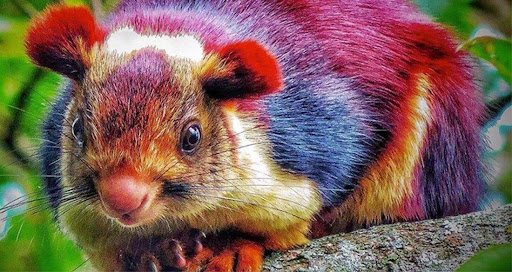Exploring the Three Types of Giant Squirrel in India

The word squirrel comes from ‘skiouros’ the greek word meaning bushy tails. There are many different types of squirrels including flying, ground and tree and altogether there are about 268 species. In India, there are three giant types of squirrel, the Black Giant Squirrel, the Indian Giant Squirrel and the Grizzled Giant Squirrel. Here is a quick look at each of them.
The Black Giant Squirrel
This is one of the biggest squirrel types in the world and it prefers to live in dry deciduous forests and montane evergreen forests. Its upper area is black and brown in color and the underneath is pale. It is also called the Malayan Giant Squirrel and in India is found mostly in the northeast where it eats mostly leaves, fruits and seeds. While it is mostly arboreal it will come down to the ground sometimes to forage.
The Indian Giant Squirrel
The Indian Giant Squirrel also known as the Malabar Giant Squirrel lives in areas where there are semi-evergreen or evergreen forests. It is a purply rufous-brown color and is fantastic at leaping from one tree to the next. As a result, it is hardly ever found on the ground and it can leap up to heights as much as 6m. They eat bark, flowers, nuts, and fruits.
The Grizzled Giant Squirrel
The next giant squirrel to spot in India is the Grizzled Giant Squirrel or sometimes called the Sri Lankan Giant Squirrel. It likes riverine ecosystems and montane forests so you find them down south in areas such as Kerala, Karnataka and Tamil Nadu. It is pale underneath and then is brown on top. It is arboreal in nature so really is only spotted when it needs to get away from a predator or when it is looking for a mate. As well as eating bark, fruits and nuts it will also eat bird eggs.
Conservation concerns
All three are a concern when it comes to conservation. The Black Giant Squirrel and the Grizzled are the most threatened but even the Indian giant squirrel is seeing a large population drop. They are all being threatened by forest areas being developed into agricultural land. When they turn to forage for food on farmlands because their habitats and food are being destroyed, they are then hunted and viewed as pests.
It has been found that squirrel numbers are actually a good way to measure how healthy a forest is. There are a few studies that indicate we should be concerned. One found that about 90% of the Malayan or Black Giant population will be gone in another 30 years. This will bring them to the edge of global extinction. Another looking at the Malabar giant squirrel finds that a lack of understanding is damaging their habitat and food source even in areas that are deemed to be wildlife sanctuaries. More needs to be done to better educate everyone about them.







